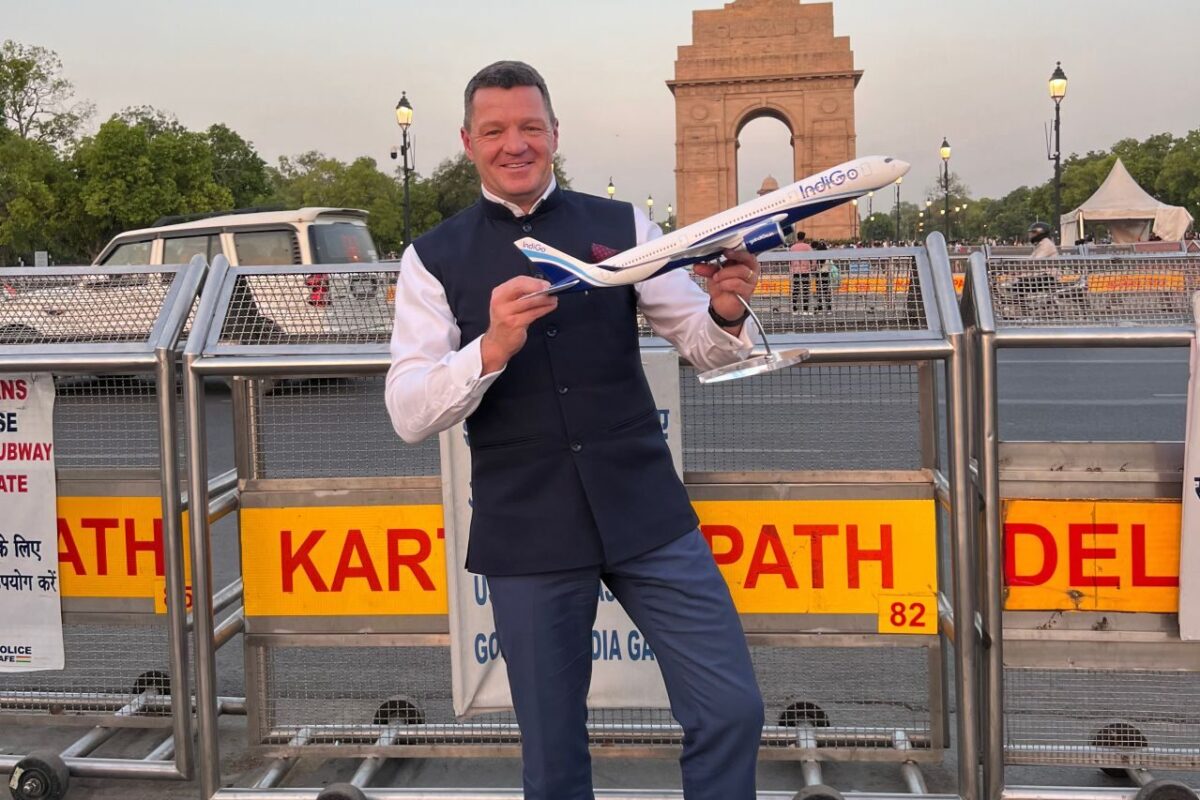IndiGo Takes Next Step in Reaching Global Ambitions – Will It Work?

Photo Caption: IndiGo CEO Pieter Elbers at India Gate
Skift Take
India’s largest airline has taken the next logical step in its growth story by ordering a sizeable number of widebody aircraft. Combined with the A321XLR, the A350-900 will give the airline the ability to connect people from India to the world.
IndiGo, which operates on the no-frills philosophy, has perfected its model of keeping costs low since 2006. The airline is one of the biggest customers of the A320/320neo family, with 1,340 of these ordered and over 350 in operation.
IndiGo’s strategy and disciplined execution over the past 18 years have earned it the ranking of India’s top airline by market share (almost two-thirds of India’s domestic traffic). It also runs a fairly successful regional operation in the Middle East, neighboring countries, and Southeast Asia.
IndiGo on Thursday announced a firm order for 30 A350-900 aircraft, the configuration of which is yet to be decided. IndiGo has also retained the purchase rights for another 70 aircraft.
Rolls Royce, as the sole supplier of engines, will power the fleet with the Rolls Royce Trent XWB engines. IndiGo expects to start inducting these aircraft into the fleet from 2027 onwards.
IndiGo’s International ambitions
IndiGo’s international ambitions are well-known.
The airline already has the A321XLR on order, which promises to increase the airline's range and enable it to reach Western continental Europe from India.
However, it needs work to build a successful international long-haul operation based in India. This could focus on taking the Indian traveler around and help with a transit operation hubbed in India. This was a part of why Pieter Elbers was brought on board as CEO after his stint at KLM.
For over a year now, IndiGo has been conducting internal assessments on the best choice for its growth plans. In 2023, the airline was reportedly interested in the Boeing 787 and pitted it against the A330neo. This year, it started assessing the A350 as well. Rumors of an order came and went. IndiGo kept quiet.
In the meantime, Air India, with its deep pockets, ordered a mix of 70 new widebody aircraft in 2023, including the Boeing 787 and 777X and the Airbus A350-900 and -1000 variants. It is also investing $400 million in refreshing the fleet of its existing 27 787-8 and 13 777ER aircraft.
IndiGo wet-leases two Boeing 777-300ER aircraft from Turkish Airlines and uses them to operate the longest flights in its network to Istanbul. This was arguably an experiment to see IndiGo could fill up a wide-body aircraft, and also likely helped it learn about the economics of operating a widebody fleet.
Will it work?
History is littered with low-cost airlines trying to make their mark on the global stage. However, IndiGo has to transition from a no-frills carrier to a hybrid operator to operate flights over 6-8 hours (medium haul). We will need to see how IndiGo’s business model and offerings evolve to accommodate long-haul flying.
Eventually, IndiGo is undergoing a quiet but massive transition from a domestic Indian carrier to a global people mover. This is the next phase of building IndiGo for its growth, and the Middle Eastern carriers will be looking, apart from the folks at Air India.



